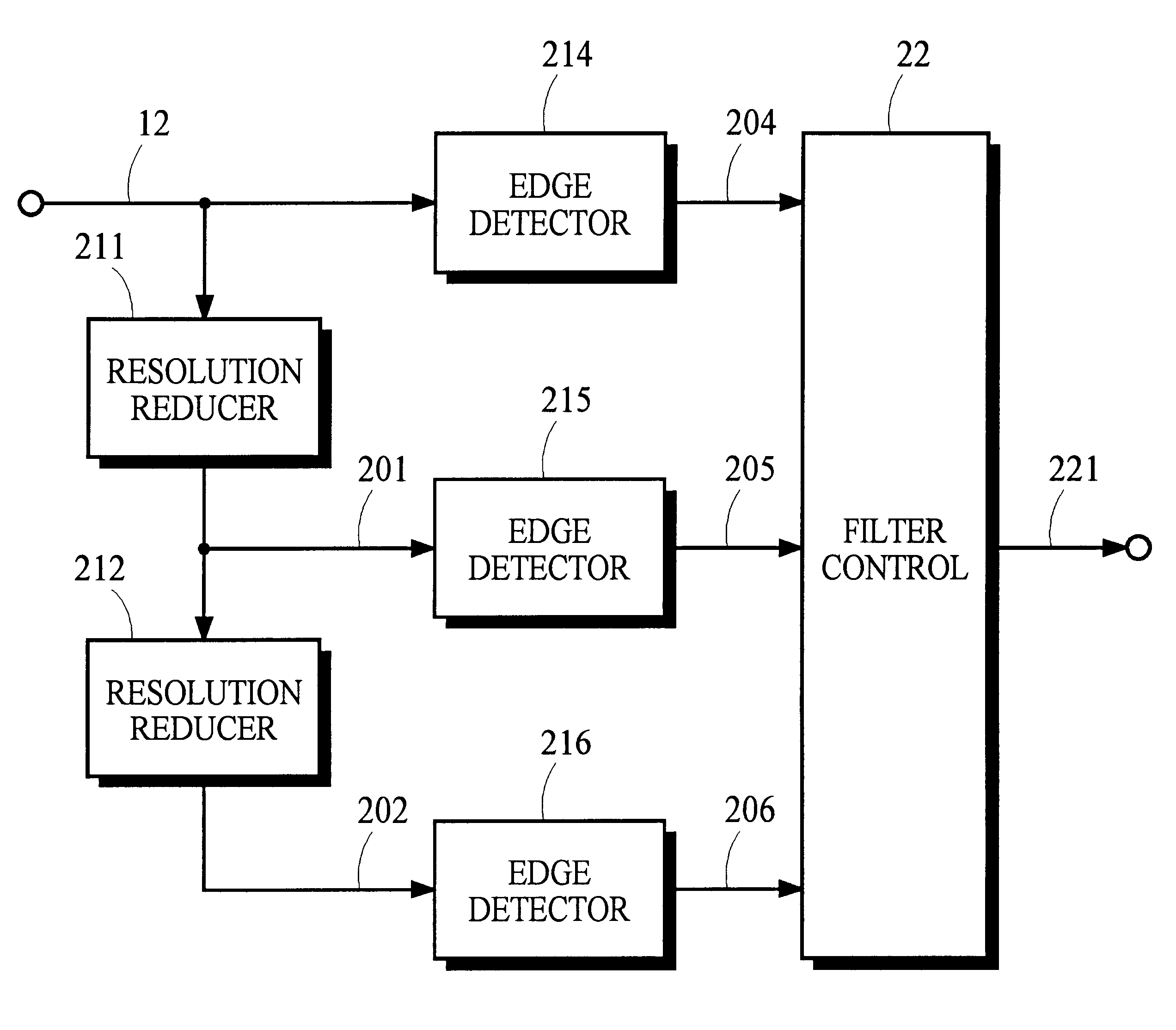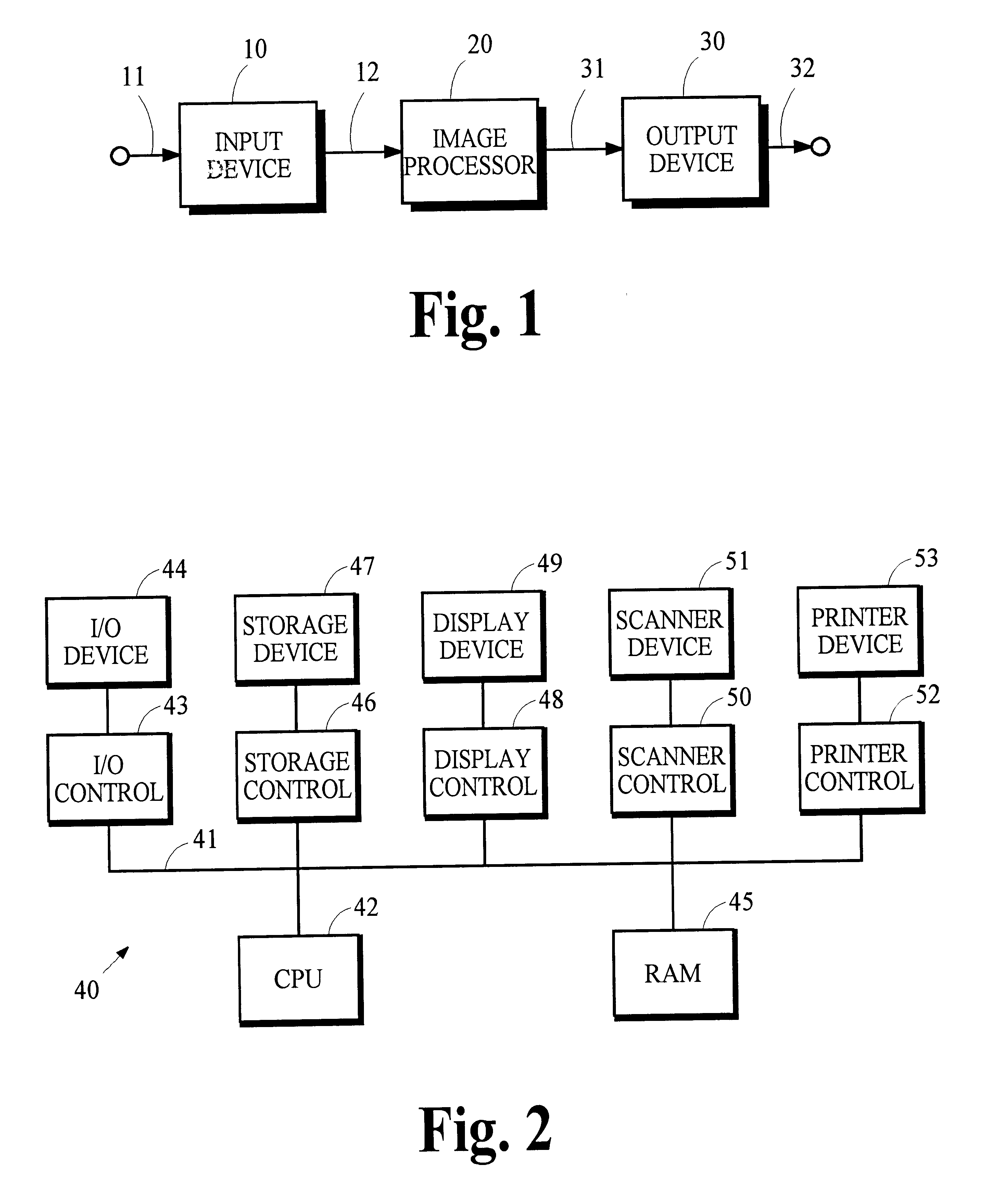Reduction of moiré in screened images using hierarchical edge detection and adaptive-length averaging filters
- Summary
- Abstract
- Description
- Claims
- Application Information
AI Technical Summary
Benefits of technology
Problems solved by technology
Method used
Image
Examples
first embodiment
filter 23 is illustrated in FIG. 14. In this first embodiment, filter 23 has three paths that may be selected by switch 238 to provide varying amounts of filtering to regions of the image. Switch 238 selects path 230, which applies no filtering, in response to a control signal received from path 221 indicating a region contains a global edge. Switch 238 selects path 231, which includes filter 235, to apply a 2.times.2 averaging filter in response to a control signal from path 221 indicating a region contains an intermediate edge. Switch 238 selects path 232, which includes filter 236, to apply a 4.times.4 averaging filter in response to a control signal from path 221 indicating a region contains no edges or only local edges.
second embodiment
filter 23 is illustrated in FIG. 15. This second embodiment is similar to the first embodiment illustrated in FIG. 14 and has an additional path 233, which includes filter 237, that can be selected by switch 238 to apply an 8.times.8 averaging filter.
In a third embodiment not shown in any figure, filter 23 has two paths that can be selected by switch 238. The third embodiment includes paths 230 and 231.
FIG. 16 illustrates steps in a suitable process for controlling the first embodiment of filter 23 shown in FIG. 14. Step 301 determines whether an edge is detected in a region within the level 1 representation. If no edge is detected, step 302 generates a control signal selecting the 4.times.4 filter in path 232. If an edge is detected in level 1, step 303 determines whether an edge is detected in the corresponding region within the level 2 representation. If no edge is detected in level 2, step 304 generates a control signal selecting the 2.times.2 filter in path 231. If an edge is d...
PUM
 Login to View More
Login to View More Abstract
Description
Claims
Application Information
 Login to View More
Login to View More - R&D
- Intellectual Property
- Life Sciences
- Materials
- Tech Scout
- Unparalleled Data Quality
- Higher Quality Content
- 60% Fewer Hallucinations
Browse by: Latest US Patents, China's latest patents, Technical Efficacy Thesaurus, Application Domain, Technology Topic, Popular Technical Reports.
© 2025 PatSnap. All rights reserved.Legal|Privacy policy|Modern Slavery Act Transparency Statement|Sitemap|About US| Contact US: help@patsnap.com


